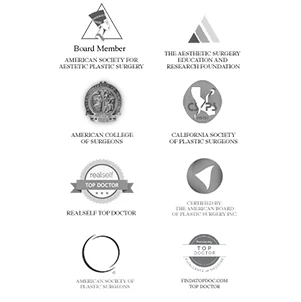The Transaxillary Incision for Breast Augmentation

Dr. Mills became familiar with the transaxillary incision for breast augmentation in 1985 under the instruction of his Plastic Surgery Fellowship program director, Dr. Rex Peterson. There are a number of reasons why Dr. Mills prefer this technique, the biggest of which is that the incision is inconspicuously placed in the armpit, and once the redness subsides, the resulting scar looks like a regular crease in the armpit.
Additional advantages of the transaxillary incision can include:
- No contact with breast tissue – If you have the ability to breastfeed, bacteria can potentially be harbored in the milk ducts. This incision never goes through the breast tissue itself, therefore avoiding the milk ducts and reducing the risk of bacterial contamination of the implant that could lead to issues such as infection and/or capsular contracture.
- Retention of nipple sensation – In comparison to the periareolar and inframammary incisions, the transaxillary incision has the least chance of causing patients to lose nipple sensation. Additionally, since the breast ducts are avoided, issues associated with breastfeeding are significantly reduced, if not eliminated.
- No implant limitations – Dr. Mills has been able to place breast implants of every size and shape through a transaxillary incision, including textured cohesive gel “gummy bear” implants. Furthermore, the implants can be placed both above or below the muscle using this incision, though Dr. Mills almost always places them under the muscle for a number of reasons.
In short, the transaxillary incision for breast augmentation can produce the least conspicuous scarring; decrease the chance for bacterial contamination and capsular contracture; and reduce the risk of losing nipple sensation, all while helping patients achieve exceptionally natural-looking results. If you are interested in breast augmentation and would like to schedule a consultation with Dr. Mills, please feel free to contact us today.
Editor’s note: This blog was originally posted on July 15th, 2015



